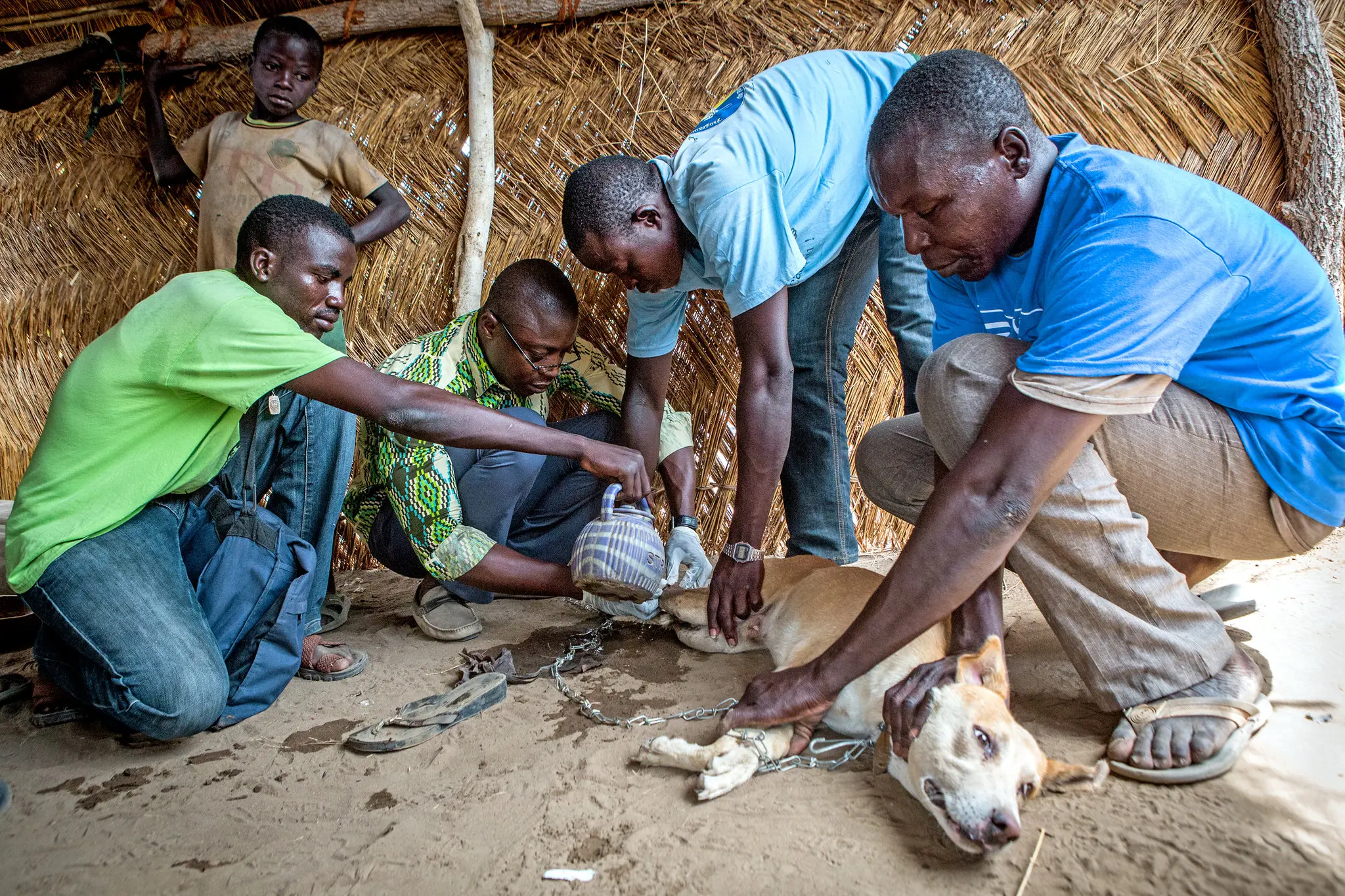Guinea Worm Makes a Comeback—This Time in Dogs, Threatening Global Eradication Goals
Once on the brink of eradication in humans, the parasitic Guinea worm is now infecting dogs in alarming numbers. Scientists fear this unexpected animal reservoir could derail one of the world’s most ambitious disease elimination campaigns.
For decades, the campaign to eradicate Guinea worm disease stood out as a beacon of hope in global health. Thanks to aggressive intervention programs led by organizations like The Carter Center, the parasitic disease—once responsible for millions of cases annually—was brought to the edge of extinction. In 1986, there were an estimated 3.
5 million human cases across Africa and Asia. By 2023, that number had plummeted to fewer than 15. But just as the world prepared to declare victory, a new and unexpected twist emerged: the worm has found a new host—domestic dogs.
What Is Guinea Worm Disease?Guinea worm disease, or dracunculiasis, is caused by the parasite *Dracunculus medinensis*. The infection is contracted when people (or animals) drink stagnant water contaminated with tiny water fleas that carry Guinea worm larvae. Once inside the host, the larvae mature over several months.
Eventually, the female worm—sometimes up to a meter long—emerges through painful blisters in the skin, usually in the lower limbs. There is no vaccine or drug to treat Guinea worm disease. The only way to remove the worm is by manually extracting it over days or weeks.
The agony caused by the worm, combined with the risk of secondary infections, has made it a horrific symbol of waterborne parasitic diseases. How Did Dogs Become Infected?While Guinea worm disease was long believed to be exclusive to humans, researchers began detecting infections in dogs in Chad around 2012. Since then, the number of canine cases has steadily risen—particularly in areas along the Chari River, where dogs consume raw fish or frogs that act as transport hosts for the worm larvae.
Dr. Ernesto Ruiz-Tiben, former director of the Guinea Worm Eradication Program at The Carter Center, explains: “We believe that dogs become infected not by drinking water like humans, but by eating fish entrails that contain the infective larvae. This creates an entirely different transmission dynamic.
”Why It MattersThe emergence of an animal reservoir is a serious complication. Eradication campaigns are built around the idea that the disease has no non-human hosts. With dogs now proven carriers, the parasite has more opportunities to survive and spread—even if human transmission is interrupted.
In 2022 alone, there were more than 600 confirmed infections in dogs in Chad—compared to just a handful of human cases globally. “This could potentially derail decades of progress,” says Dr. Maria Jannoti, a parasitologist with the WHO.
“Eradication requires complete interruption of transmission in all species, not just humans. ”The Global Eradication Campaign at RiskThe Guinea Worm Eradication Program (GWEP), spearheaded by The Carter Center and supported by the World Health Organization, the CDC, and national governments, had been hailed as a near-miraculous public health success. Alongside smallpox, it was poised to become only the second human disease in history to be eradicated.
Now, that dream hangs in the balance. The program has shifted its focus toward animal surveillance, especially in Chad, Ethiopia, and Mali. Health workers have trained local residents to spot infections in dogs and to tie up infected animals to prevent the worms from contaminating water sources when they emerge.
Innovative Approaches to ControlTo counter the spread in dogs, public health teams are implementing several novel strategies:- Fish Entrail Burial Campaigns: Villagers are encouraged to bury fish entrails rather than discard them in open areas where dogs can eat them. - Dog Tethering: Infected dogs are tied and kept away from water sources to prevent transmission. - Water Filtration: Households receive cloth filters to strain out the water fleas that carry larvae.
- Surveillance Incentives: Rewards are offered to community members who report cases in humans or animals. While these methods have shown promise, the unpredictable behavior of dogs and lack of veterinary infrastructure in remote areas pose serious challenges. A Race Against TimeThe longer the worm survives in animals, the harder it becomes to eliminate entirely.
Diseases like polio and measles have taught public health experts how easily eradication efforts can backslide when attention or funding wanes. Dr. Jannoti warns, “We’ve already invested billions of dollars over four decades.
If we let this slip away because of a handful of canine cases, it would be one of the greatest missed opportunities in the history of global health. ”Communities at the ForefrontIn the villages of southern Chad, where most canine cases have occurred, community members have become essential partners in the fight. Local volunteers patrol riversides, monitor dogs for signs of infection, and educate neighbors about the importance of safe water and proper fish handling.
“We used to think this was just a human problem,” says Mbaké, a village health worker. “Now we know the dogs can suffer too—and they can keep the disease alive. So we must protect them as well.
”Scientific Uncertainty RemainsWhile the worm infecting dogs is genetically similar to the one infecting humans, researchers are still studying whether the same control methods will ultimately succeed. Some fear the possibility of wildlife becoming involved—though so far, no wild species have been confirmed as significant reservoirs. Genomic studies are underway to trace the origin and evolution of the parasite in animal hosts.
Understanding this dynamic is critical for adapting control measures. Conclusion: A Setback, Not a DefeatThe appearance of Guinea worm in dogs is undeniably a setback, but not necessarily a death sentence for eradication. Health leaders say that with continued international support, enhanced surveillance, and tailored interventions, the finish line is still within reach.
But it will require adapting strategies and expanding the focus from human-centered efforts to a more inclusive, One Health approach that considers the interconnected health of humans, animals, and the environment. As Dr. Ruiz-Tiben says, “This is a reminder that nature is always more complex than we think.
But complexity doesn’t mean failure—just that we need to work smarter, together, and with urgency. ”In the race to end Guinea worm disease once and for all, humanity now has a new challenge—and a new partner to protect: man’s best friend.
27th july 2025



